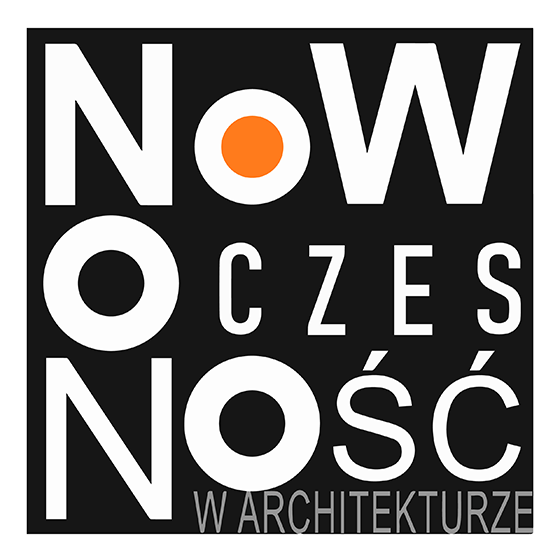
The conference will analyse the role of the architect and the impact of the architectural design process on the transformation of the built environment – the creation of contemporary architectural and urban planning solutions in the context of the phenomenon of globalisation and the climate crisis, the development of new technologies, the emergence of new social situations and needs, and culture and natural heritage at the local level. Issues concerning innovative methods of transforming the architectural message, the search for inspiration to show the consequences of globalisation and new technologies in the transformation of architectural space will not be overlooked.
The discourse undertaken will be a further attempt to find answers to the research questions posed:
- How can the continuity of the character of regions be preserved in the context of the creation of urban and architectural space under conditions of increasing globalisation?
- How do developments in new technologies affect architecture, the quality of the built and natural environment, in the context of the climate crisis?
The discussion will take place in two planned plenary sessions:
The Logic of Locality in the Age of Globalisation
- Modernityand postmodernity in the age of globalisation,
- „Glimmers and shadows” of globalisation – global trends, local opportunities and their influence on shaping architecture,
- Shaping contemporary architectural and urban space in the social, historical and cultural context,
- City space and public utility architecture as fields of social innovation in the context of global and local conditions,
- Influence of inspiration on shaping architecture and the perception of recipients in the context of globalisation and local conditions,
- Redefinition of the notion of „materiality” in architecture,
- Durability of architectural patterns vs. dynamics of change in the built environment,
- Design as a creative research process – the role of the architect in the creation of the contemporary built environment and the development of theoretical foundations of design practice.
Closed loop architecture
- The relationship between the built and natural environment,
- Architecture as a field of social, technological, material innovation,
- Closed loop construction – circular architecture,
- The 7 „R” principles: Refuse, Reduce, Reuse, Repurpose, Recycle, Rethink, Renew.
Modular architecture
- EU taxonomy as a new design axiom,
- Smart City architecture and urbanism,
- Design as a creative research process.
Konferencja będzie poświęcona analizie roli architekta oraz wpływowi procesu projektowania architektonicznego na transformację środowiska zbudowanego – kreację współczesnych rozwiązań architektonicznych i urbanistycznych w kontekście zjawiska globalizacji i kryzysu klimatycznego, rozwoju nowych technologii, pojawiania się nowych sytuacji i potrzeb społecznych oraz kultury i dziedzictwa przyrodniczego na poziomie lokalnym. Nie zostaną pominięte zagadnienia dotyczące innowacyjnych metod transformacji przekazu architektonicznego, poszukiwania inspiracji w celu ukazania konsekwencji globalizacji i nowych technologii w transformacji przestrzeni architektonicznej.
Podejmowany dyskurs będzie stanowić kolejną próbę znalezienia odpowiedzi na postawione pytania badawcze:
- Jak w warunkach postępującej globalizacji zachować ciągłość charakteru regionów, w kontekście kreowania przestrzeni urbanistycznej i architektonicznej?
- Jak rozwój nowych technologii wpływa na architekturę, jakość środowisk zbudowanego i przyrodniczego, w kontekście kryzysu klimatycznego?
Dyskusja będzie prowadzona w ramach planowanych dwóch sesji plenarnych:
Logika lokalności w dobie globalizacji
- Nowoczesność i ponowoczesność w dobie globalizacji.
- „Blaski i cienie” globalizacji – globalne trendy, lokalne możliwości i ich wpływ na kształtowanie architektury.
- Kształtowanie współczesnej przestrzeni architektonicznej i urbanistycznej w kontekście społecznym, historycznym i kulturowym.
- Przestrzeń miasta i architektura użyteczności publicznej, jako pola innowacji społecznej w kontekście uwarunkowań globalnych i lokalnych.
- Wpływ inspiracji na kształtowanie architektury oraz percepcję odbiorców w kontekście globalizacji i uwarunkowań lokalnych.
- Redefinicja pojęcia „materialności” w architekturze.
- Trwałość architektonicznych wzorców vs. dynamika zmian środowiska zbudowanego.
- Projektowanie jako twórczy proces badawczy – rola architekta w kreowaniu współczesnego środowiska zbudowanego oraz rozwoju teoretycznych podstaw praktyki projektowej.
Architektura obiegu zamkniętego
- Relacje pomiędzy środowiskiem zbudowanym a przyrodniczym.
- Architektura jako pole innowacji społecznych, technologicznych, materiałowych.
- Budownictwo w obiegu zamkniętym – architektura cyrkularna.
- Zasady 7 „R”: Refuse, Reduce, Reuse, Repurpose, Recycle, Rethink, Renew.
Architektura modułowa
- Taksonomia UE jako nowy aksjomat projektowania.
- Architektura i urbanistyka Smart City.
- Projektowanie jako twórczy proces badawczy.